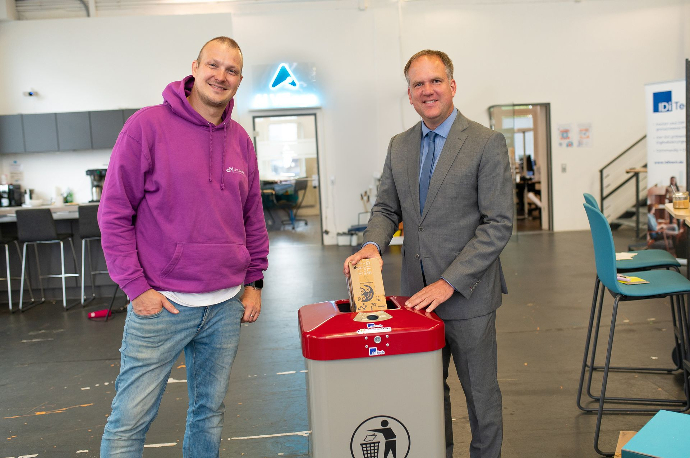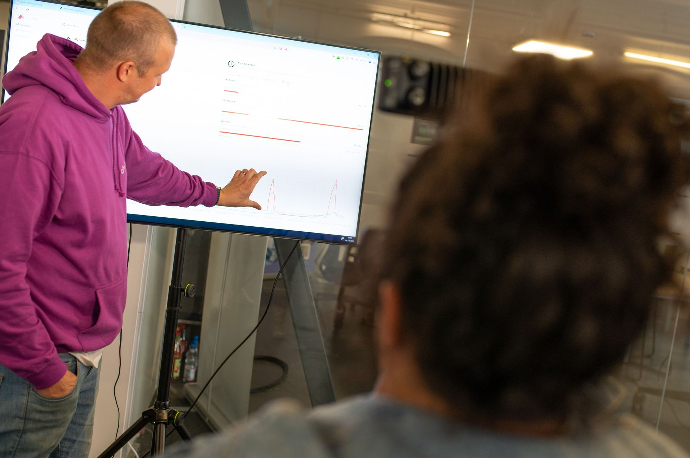The challenge of static route planning: overflowing rubbish bins and unnecessary empty journeys

Traditionally, routes for emptying public waste bins are planned statically, based on the assumption of constant daily boundary conditions. However, the conditions vary considerably: parks and park benches are more frequented in summer than in autumn, in autumn more employees are absent due to illness, and in winter there are more frequent vehicle breakdowns. These static assumptions lead to overflowing rubbish bins, littering, unwanted animals and unnecessary empty journeys that cause CO2 emissions.
Dynamic route planning using fill level sensors and AI: Innovative waste disposal with LoRaWAN and helium network
Thanks to the detection of the fill levels of public waste bins, it is now possible to plan routes dynamically on a daily basis. Different sensor types and manufacturers were tested, as were different installation locations and positions. The sensor data is sent to the network server of the Institute for Digital Future Technology in Hürth via LoRaWAN and the Helium network operated by the citizens of Hürth. There, the data is collected by the scale-up dataMatters, which has developed a federated AI for route optimisation. This is made available as an app via the Urban Data Platform, a joint development with the city of Dormagen.

Result: Efficient waste disposal thanks to data-based routes - fewer empty trips and faster responses to full bins

Waste is now no longer disposed of according to fixed routes, but rather according to the fullest or oldest bins. This enables an efficient and data-based response to waste accumulations at temporary hotspots and to outdated waste. The result is fewer empty trips, less littering and greater satisfaction among employees and residents.
Daniel Trauth, CEO
Alpha-Omega Technology ensured fast delivery of the sensors, while expert Michael Neumann advised on sensor selection and provided support during integration.
Further information:


